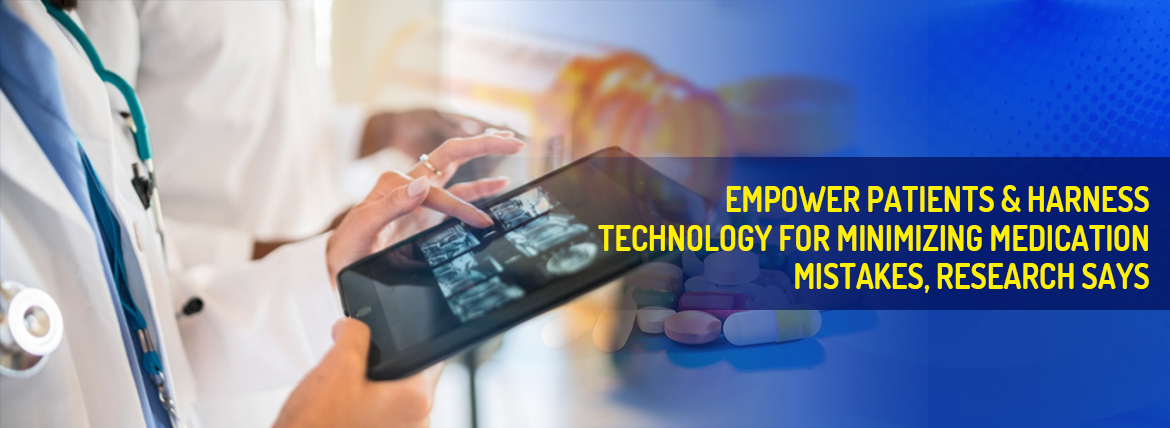Empower patients & harness technology for minimizing medication mistakes, research says
Improved integration of care between healthcare providers as well as the use of electronic records that “follow the patient” are highly important for reducing serious medication errors in Australian healthcare, according to a new research.
Patients are the “one constant” as they move between hospitals, GPs, specialists, ancillary primary care services as well as private clinics, according to ‘Reducing medication errors at transitions of care is everyone’s business’ published in the Australian Prescriber journal, & they have the most to lose.
“As patients move between health providers and settings, discrepancies and miscommunication in clinical records are common and lead to serious medication errors. Hospital admissions and discharges, interdepartmental transfers, or care shared between a specialist and a GP are often dangerous times for patients, especially those with long-term conditions or taking multiple medicines.”
A patient-centric approach, new technology as well as an increased focus on resolving the problem by providers are highly important for reducing errors & the harm they cause.
Maintaining an accurate, up-to-date as well as comprehensive medicines list that follows the patient minimizes serious medication error. Pivotal to this record is a medicines reconciliation review at error-prone transition points.
“Multiple health professionals involved in a patient’s journey through healthcare services need to embrace accountability for medicines-related outcomes. Emerging technologies for communication between primary care and specialist or secondary services will facilitate this, but importantly, there needs to be commitment from each health professional to undertake this approach.”
Researchers Dr Shane Scahill from New Zealand’s Massey University, Professor Amanda J Wheeler from Griffith University’s Menzies Health, Auckland GP Dr David Hopcroft as well as Dr Helen Stapleton from Mater Education recently found that “seamless integration of care between healthcare professionals and the use of technology” can help improve communication within fragmented health system of Australia.
Between 2 to 3 percent of all hospital admissions in Australia are medication-related, with around 230,000 admissions every year caused by patients taking the wrong drug or wrong dose. Poor medication management during or after hospital admission increases readmission risk in the next month by a staggering 28%, while the cost of medication mishaps is estimated to be around $1.2 billion annually.
“Patient care pathways must be integrated through the health sectors. Electronically shared records would facilitate easy transfer of correct, real-time information,” the researchers found.
Electronic prescribing systems are highly important for improving communication between clinicians as well as healthcare providers.
“As part of electronic medication management systems, eprescribing can enhance safety and quality by ensuring complete and legible orders, and reducing medication errors and adverse reactions.”
Figures from Princess Alexandra Hospital, which became fully digital 1 year before, have shown significant benefits. In the year 2017, medication errors at PAH reduced by 44%, emergency readmissions within twenty-eight days of discharge were 17% less as well as drug costs per weighted activity unit were 14% lower.
But, according to the researchers, prescribing systems may introduce new types of errors like incorrect medicines selection from drop-down menus. They recommend that systems should add safety warnings – including for contraindicated medicines or potentially harmful doses – that are prioritized to avoid alert fatigue. With many different prescribing systems available today, national standards are recommended in order to ensure safety as well as quality criteria. Integration with other important clinical systems is highly important for decision support as well as the easy exchange of patient data between providers.
According to the researchers, My Health Record can provide a step towards integration as well as patient empowerment, especially following the significant uptake nationally by Australians after the opt-out period ends in October. But, records could be incomplete.
“While easing of access to medicines information for consumers moving between multiple prescribers is a significant step forward, information may be incomplete. For example, medicines that have been stopped, or doses changed, may not be reflected in prescription or dispensing records.
“Practitioners’ notes may not have been uploaded and made available via the Medicines Information view. Also, consumers may have removed prescription and dispensing information in their record.
“The vital element in all transitions of care is accurate and timely communication between patients, their carers, and health practitioners. This helps to confirm and validate information contained in the shared electronic health record.”
Also, smartphone apps like MedicineWise can help patients, healthcare practitioners, as well as carers ensure the accuracy of prescriptions.

